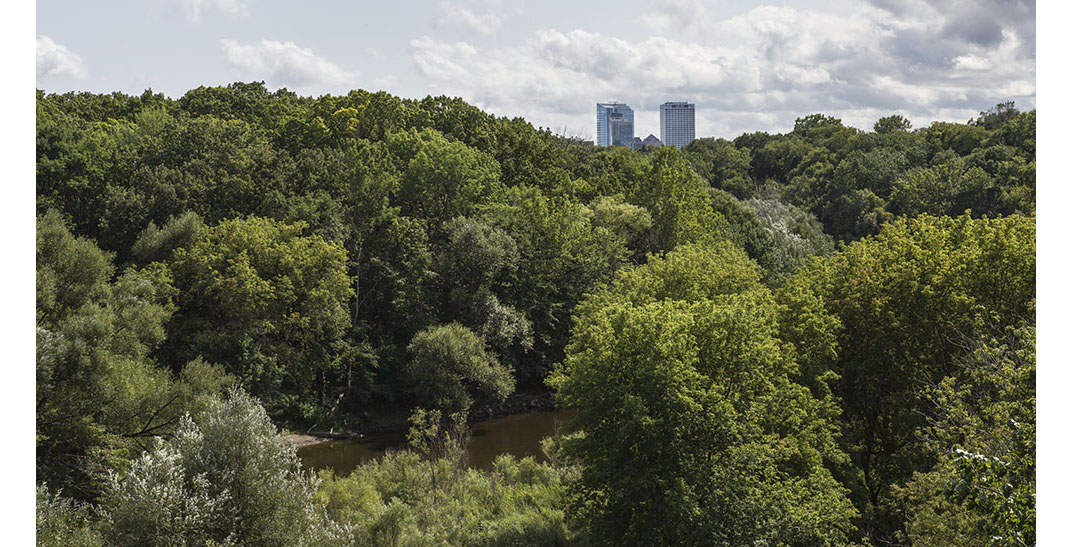
The State of Milwaukee’s Urban Forest
April 28, 2025 | Topics: Issues
Dan Buckler, Wisconsin DNR
Photography by Eddee Daniel
The urban forest of Milwaukee is a gift of the earth. Dramatically shaped, altered, and cultivated by humans, nature nonetheless is the powerhouse behind the incredible benefits that trees provide for the inhabitants of this city.

That is one takeaway from a long-term, ongoing study of Milwaukee’s urban forest from the U.S. Forest Service and Wisconsin Department of Natural Resources. Just the narrow slice of “ecosystem services” that the project estimated – impacts on air pollution, stormwater management, carbon storage and sequestration, and energy usage – point to trees being important parts of our urban infrastructure.
But, of course, there are all sorts of other benefits of trees and reasons they deserve a lauded place in our communities, not least of all their intrinsic value.
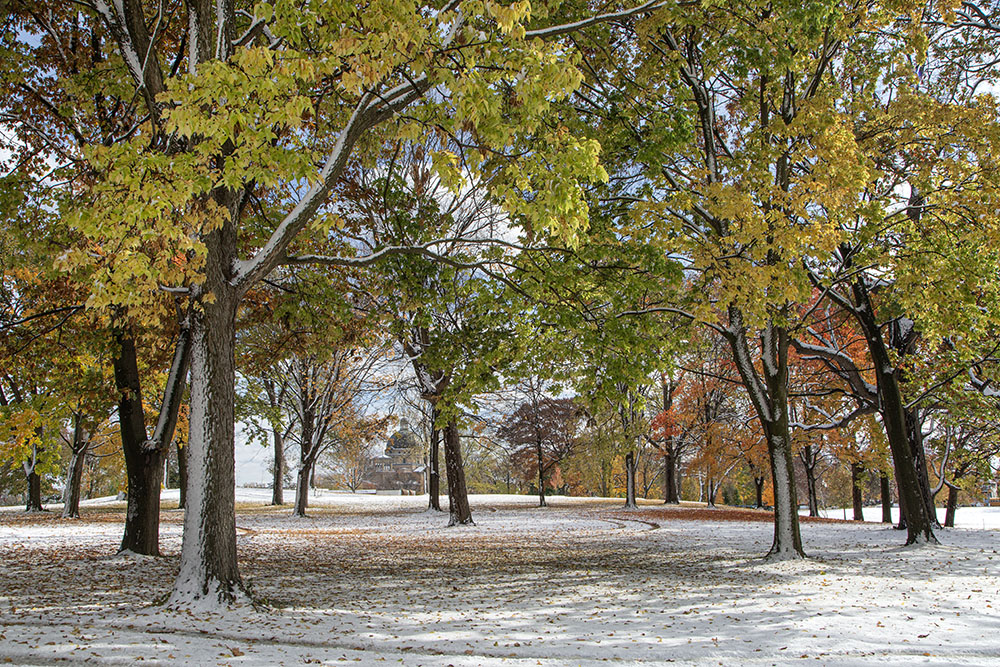
That long-term project – the Urban Forest Inventory and Analysis – recently released results for the cities of Milwaukee and Madison. These results, derived from around 200 plots in each city (randomly distributed across public and private land), provide a reference point for observing change in the urban forest. They also help demonstrate both the scope of problems, as well as opportunities.
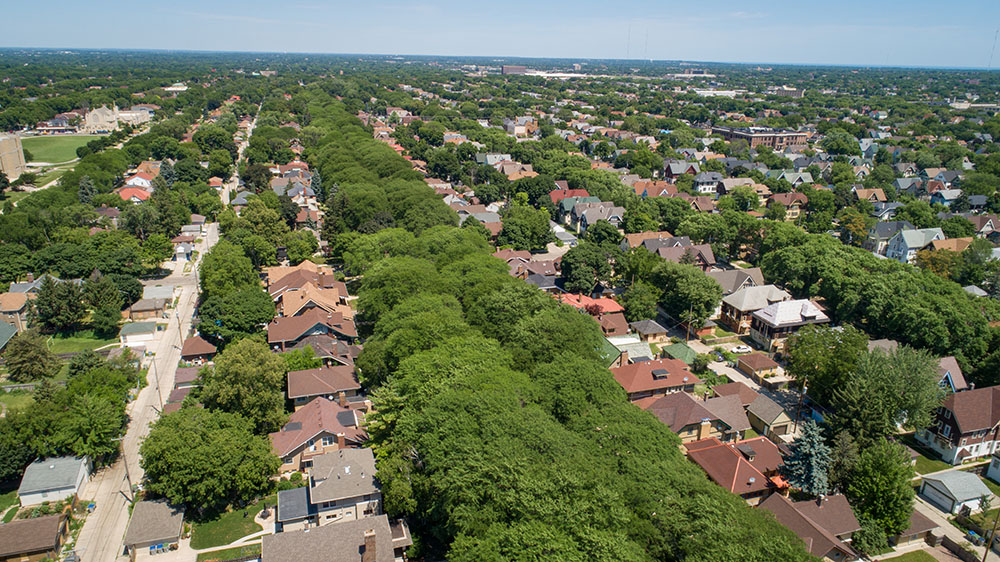
A delightful finding, if not totally surprising, is that big trees are important! As simple and intuitive as it sounds, it’s amazing that large trees – those with diameters at least 15” in diameter – represent only seven percent of the city’s trees yet provide half of the urban forest’s leaf area. And it is leaf area that drives many of the benefits identified above, such as pollution and stormwater reduction. These larger trees in particular need protection and proactive maintenance to ensure as many as possible stay on the landscape. Tree planting is attractive (and needed!), but tree retention is even more important.
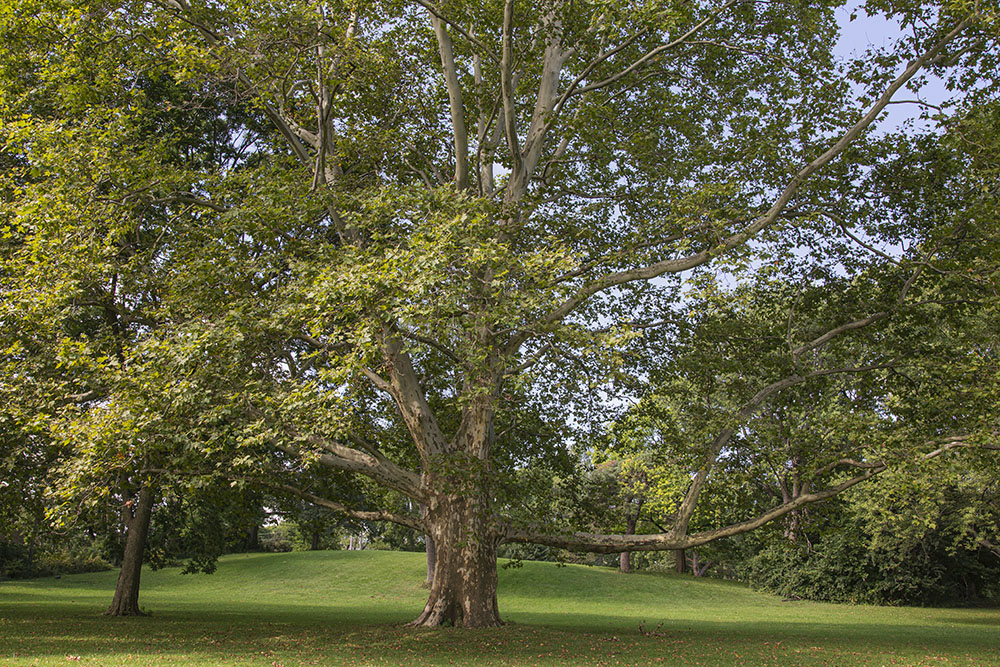
Big trees also provide more habitat and food for animals, stabilize the soil, and cool our city through shade and evapotranspiration (the movement of water through a tree and out through its leaves as water vapor). They are also large reservoirs of carbon; those trees at least 15” in diameter store 60 percent of the city’s forest carbon. Even those that come down and do not have the opportunity to decompose in place can be recycled into important products (“urban wood utilization”).
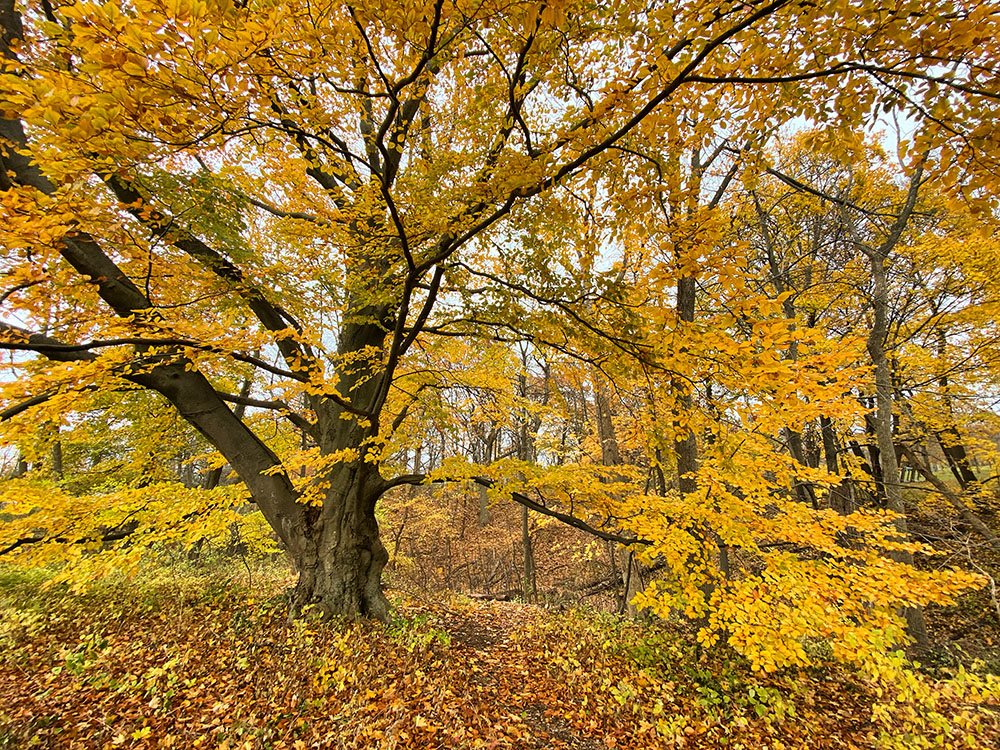
If you’re interested in paying homage to some of these magnificent trees in the city, there are loads of great places to visit; some of my favorite locations include McGovern Park on the north side, Kern Park in Riverwest, and Forest Home Cemetery & Arboretum on the south side.
Additionally, there are around 74,000 large trees along our streets – you can check out Milwaukee’s street tree inventory on the Wisconsin Community Tree Map, a compilation of tree inventories from around the state. Big trees are also distributed across the city’s residential and other private properties.

Urban foresters like me often encourage people to plant the largest species that is appropriate for a given space. However, in densely developed places like Milwaukee, space is at a premium. One of the reasons why parks and other large properties are important is that there is often more space to plant or maintain large-statured trees. Despite some incredible exceptions (see the American elm street tree photo below), if given more breathing room, there is a greater likelihood of survival into maturity.
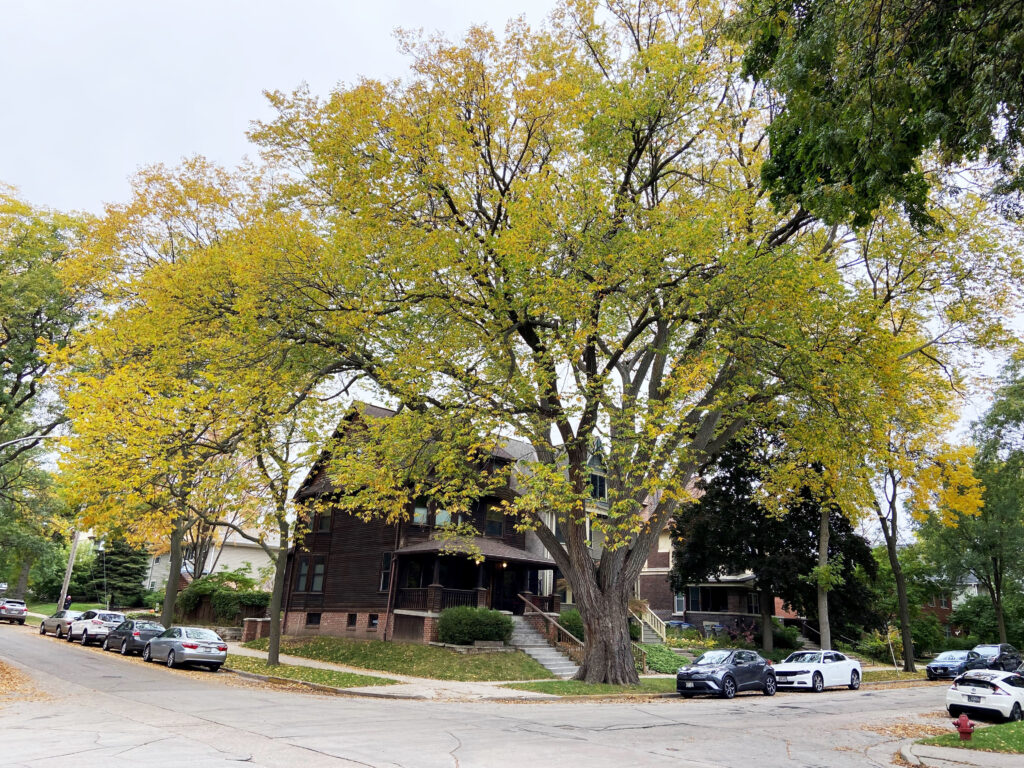
But the news is not all good. Species diversity, for example, is troublesome. Readers are no doubt aware of the devastation wrought by the emerald ash borer; 60 percent of the city’s ash trees were found to be dead between 2015 and 2021 and a whopping 88 percent of dead trees at least 5” in diameter in the city were estimated to be ash. Along with the earlier trauma of Dutch elm disease, emerald ash borer has made many people acutely aware of the problems of species or genus overrepresentation.
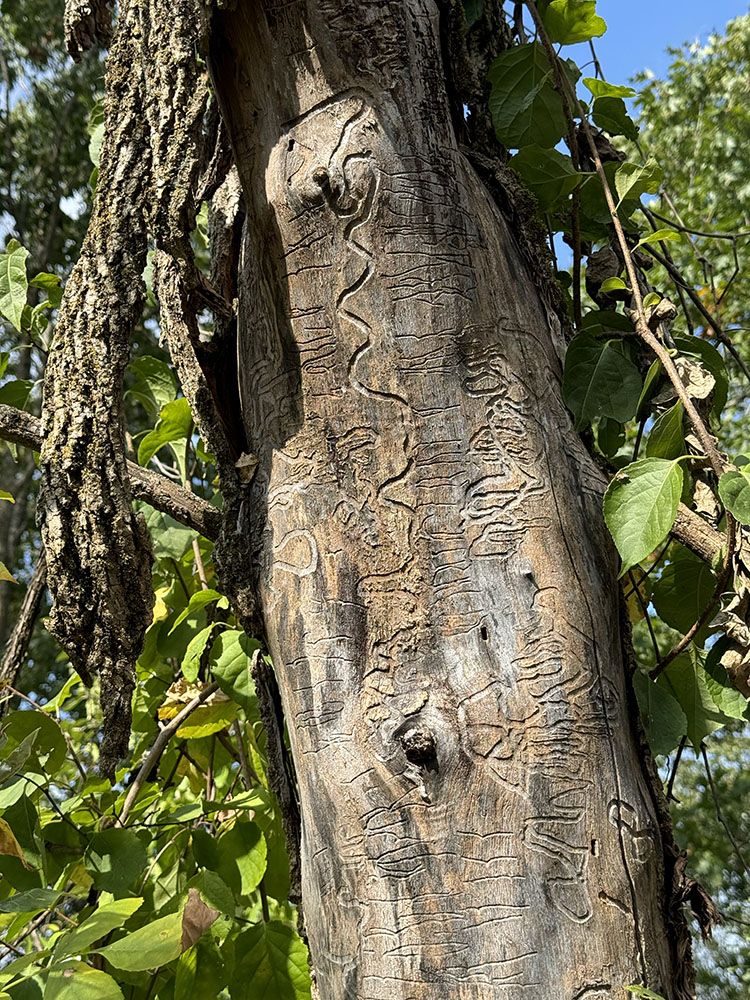
And as much as the city’s ash trees have been ravaged, the potential impact to Milwaukee is much greater should the maple genus be seriously threatened by a pest or pathogen. There are high numbers of maple trees (a genus which includes the very common boxelder) across all ownerships and size classes. In more maintained areas (e.g., yards, rights-of-way), four of the top five species are maple, with green ash as the other! Although no serious threats are currently detected, given these data, the future use of maples in planting regimes should be carefully considered. Maintaining existing maple trees and the benefits they provide is critical, while also planning and planting for a more diverse future population.
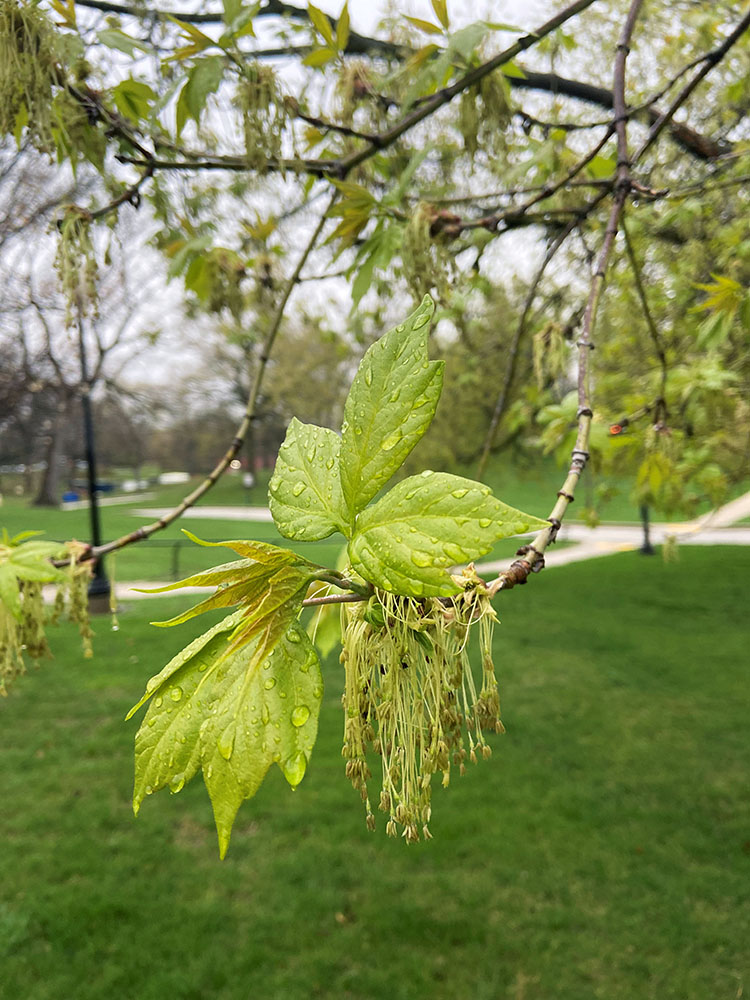
Milwaukee also has a buckthorn problem. Because of its quantity and its competitive advantages (e.g., buckthorn holds its leaves longer than native species and colonizes land rapidly), the invasive buckthorn threatens the regeneration of desired species and puts the ecological function of some areas in jeopardy, especially pockets of more “natural” forest land. Of the more than 2,000 acres of buckthorn cover estimated in Milwaukee, more than 80 percent is on forest land or recreational/cemetery spaces. These more lightly maintained spaces, and the native species within them, are most at risk.
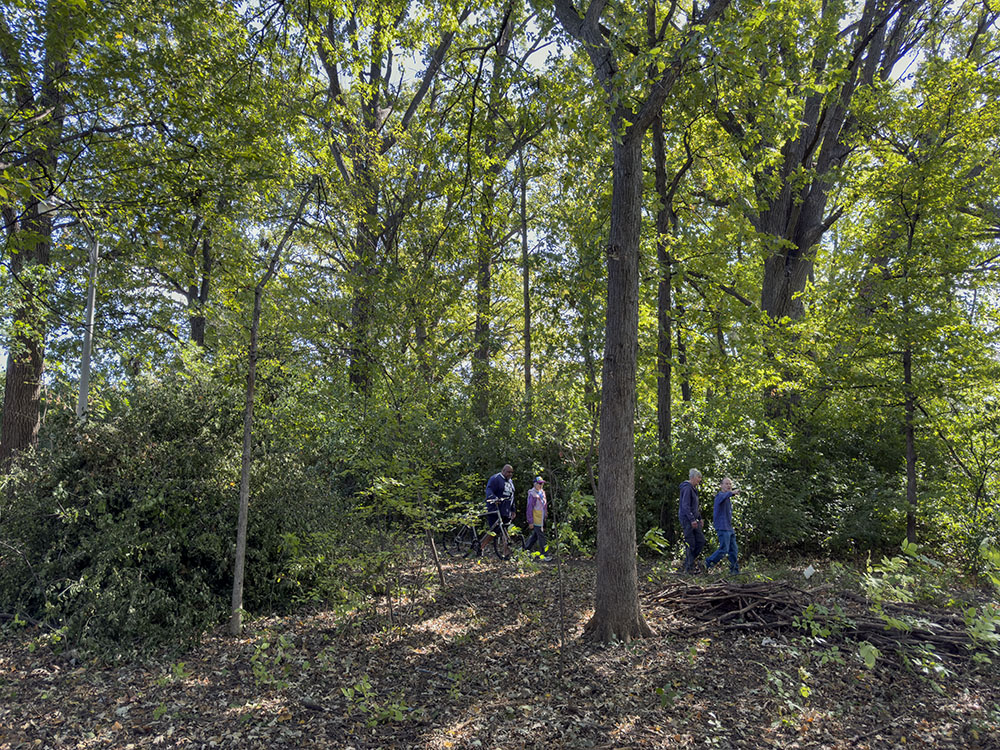
Despite the threat that it poses, and ongoing management efforts, buckthorn is not going to be eliminated. However, it needs additional management, especially in the few remaining spaces where large, native trees still reign in Milwaukee, such as pockets of McGovern Park, Havenwoods State Forest, and Jackson Park. According to project data, native species overwhelmingly found in forest land relative to other land uses in Milwaukee include sugar maple, cottonwood, bur oak, red oak, and basswood.
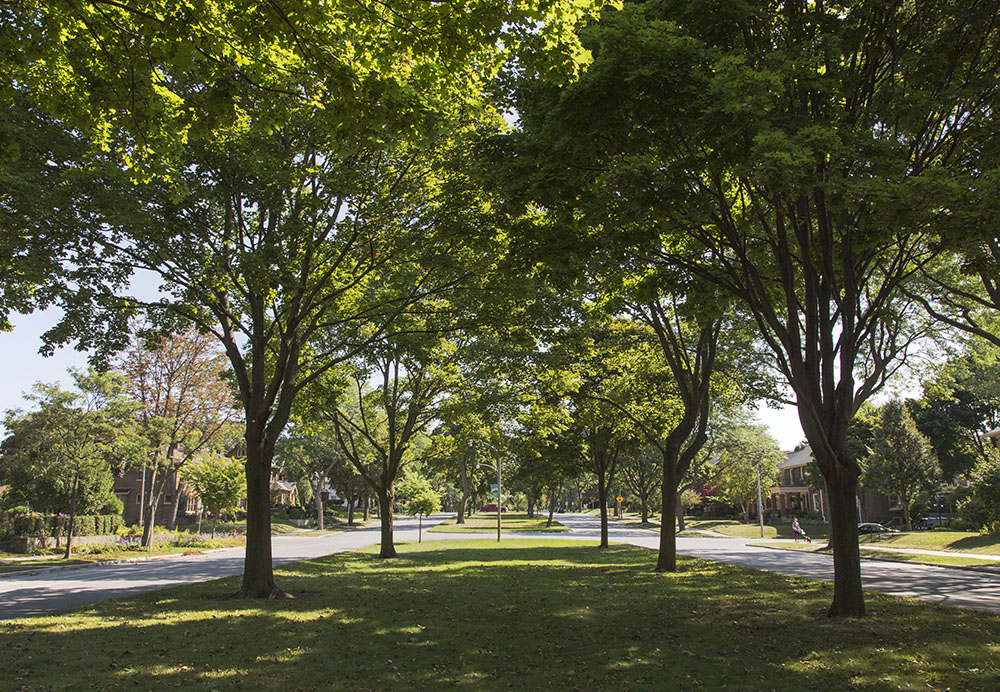
Because buckthorn is both relatively small and very invasive, areas where it dominates may not harbor the large trees that provide great benefits. For example, despite having the most stems in the city, 11 other species store more total carbon. And when considering the carbon storage by crown area, 55 species (of 56 surveyed!) store more carbon per acre of crown than buckthorn.

While there are significant problems or risks in the urban forest, there are also opportunities. For example, commercial and industrial land occupies a quarter of the city yet has a relatively low canopy cover and density of trees. These lands provide an awesome opportunity for tree planting.

The recently released study offers a snapshot of the city’s current forest, but project plots are currently being revisited (a process that unfortunately takes years!). That revisitation and the change observed could offer powerful indicators on the trajectory of Milwaukee’s forest. In the meantime, let us be wise stewards of the land.
This analysis is also available for the City of Madison, with additional data for other urban areas across the state to be released in 2026.

Note: The featured photo at the top is a view from the Locust Street bridge towards downtown and the Milwaukee River Greenway. Gordon Park is on the right and Riverside Park on the left.
Related stories:
Protecting & Restoring Nature in the City
Planting and Tending Trees for the Planet
Trailblazers aim to bring nature back to Milwaukee’s 30th Street Corridor neighborhood
Dan Buckler is an urban forester with the Wisconsin DNR. He can be reached at daniel.buckler@wisconsin.gov. Eddee Daniel is a board member of Preserve Our Parks. All photographs by Eddee Daniel except as noted.
2 thoughts on "The State of Milwaukee’s Urban Forest"
Comments are closed.


Is there a map of the “Big Trees” in the Milwaukee area?
Not that I’m aware of. If I knew where they all were I’d make one up! 😉